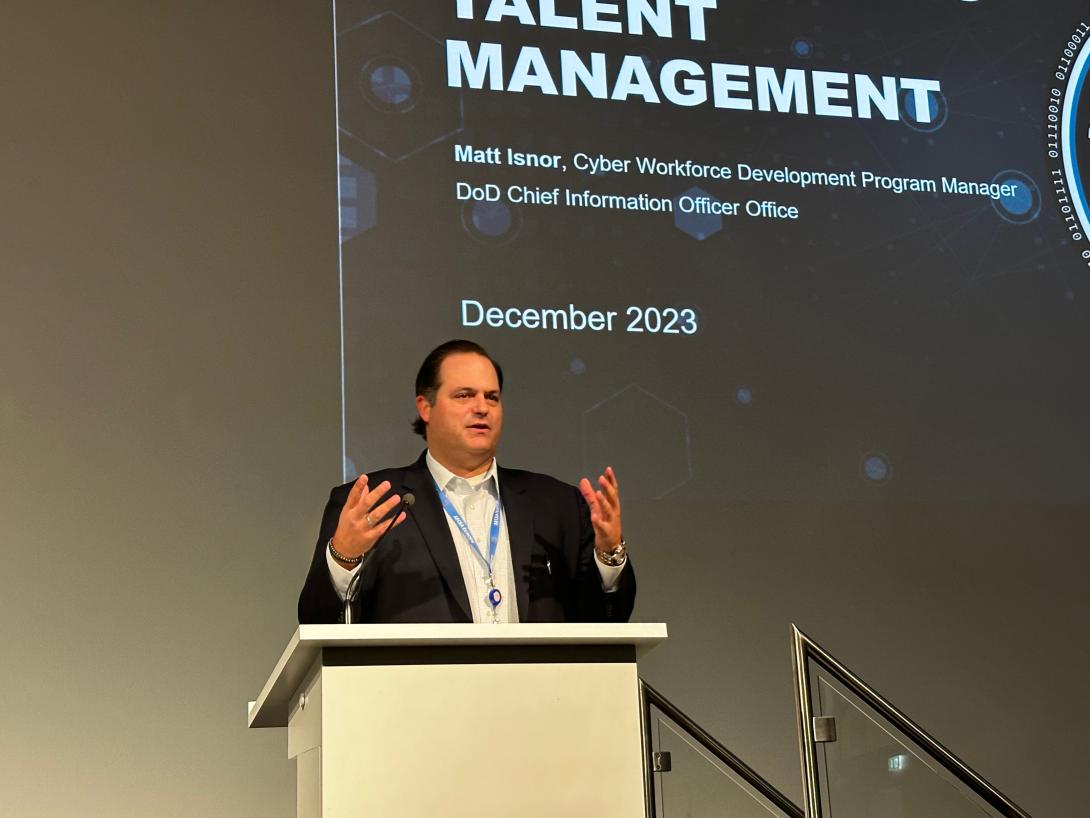Cyber Workforce Development Is a Long-Awaited Necessity
For the military to succeed across the digital battlefield, the Department of the Defense must have a cyber workforce that is the most capable and dominant force in the world. The DoD needs personnel that can execute across the complexity of its cyber missions.
That vision, said Matt Insor, Cyber Workforce Development program manager in the Defense Department’s Chief Information Office, underpins the department’s latest activities to improve its cyber workforce, including how it recruits, identifies, develops and retains cyber warriors and technology professionals.
“[It is about] what we consider the most important asset, our people,” Insor said, speaking at AFCEA International’s inaugural TechNet Transatlantic conference, on December 6 in Frankfurt. “We are trying to grow those individuals and set up to be able to foster the correct [skills that] individuals need that will ultimately be doing the infrastructure building, the defending of networks, and conducting operations.”
The department outlined its cyber workforce strategy in March 2022, then built a framework to implement improvements across the career fields in cyber information technology, cybersecurity, cyber effects, cyber intelligence, data operations and artificial intelligence, software engineering and other areas.
The office is currently implementing 38 initiatives—including conducting cyber workforce development focus groups and action groups—which will ultimately result in project plans and end state solutions to foster improvements, Insor stated.
“There are a lot of things in the department that are broken—hiring practices, occupational series, areas of focus on how to bring in talent tied to higher clearance issues, those type of things,” Insor shared. “We need to be able to be agile, flexible and we need to be able to move at the speed of light especially in cyber. We need to do the same with our talent and be comparable to what industry does.”
Part of the effort includes revamping how it defines cyber roles. The department examined occupational series, the individual occupational requirements and position descriptions, updating 39 work roles, he noted.
“We went from 52 work roles up to 72 work roles now and it really gives us a lot of usability for the future,” Insor said.
Matt Insor, Cyber Workforce Development PM @DeptofDefense: we are working to change the culture related to advancing the cyber workforce, tackling hiring practices and time to hire amongst other issues. #AFCEATechNet pic.twitter.com/NsUp62yJJo
— Kimberly Underwood (@Kunderwood_SGNL) December 6, 2023
Moreover, the department will apply the work role revamp to other areas outside of cyber, but equally important workforce areas such as spectrum, electronic warfare, quantum computing. Older, legacy workforce roles did not even include cloud and development security operations, or DevSecOps—the more modern and secure way to prepare software and digital capabilities.
The process will allow department leaders to understand and track their workforce.
In addition, the department introduced the 8140 qualification program—a process that took six years to promulgate, Insor said. The 8140, which builds on the previous 8570 program, is aimed at setting cyber workforce standards for the DoD while allowing for flexibility in component implementation, Insor noted.
“A lot of the various strategies inside of the department right now, such as the National Defense Strategy or the Cyber Strategy, they mainly focus on the technical aspects,” Insor emphasized. “And workforce gets a small subsection—it's about a paragraph. Mr. [John] Sherman [DoD CIO] really wanted to expand upon that ... to really focus on how we are bringing on the next wave of talent to the workforce.”






Comments